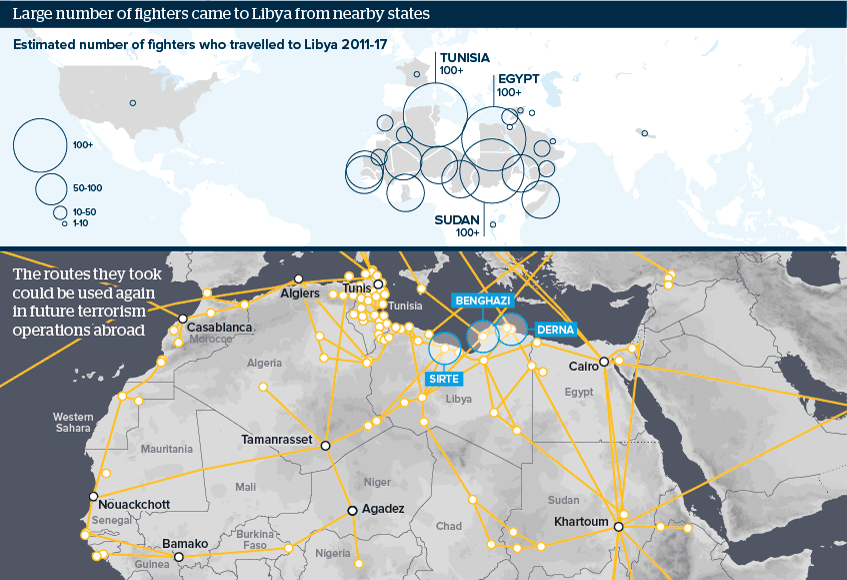Libya foreign fighters will pose lasting regional risk
Individuals from a variety of African states arrived in Libya between 2011-17 to engage in jihad
Source: The Washington Institute for Near East Policy; The Others: Foreign Fighters in Libya, Aaron Y. Zelin
Outlook
Since the Libyan revolution in 2011, some 2,600–3,500 foreigners arrived in Libya to join jihadist groups, according to terrorism researcher Aaron Zelin. Islamic State (IS)’s formation of a ‘Libya Province’ in 2014 accelerated the inflow and, unusually, attracted recruits from countries such as Burundi, Eritrea, Ethiopia, Gambia, Ghana, Kenya and Senegal, as well as known jihadist hotspots Somalia, Mali and Nigeria.
Yet fears that Libya would become IS’s strategic fall-back region after the loss of its territories in Syria and Iraq did not materialise, and IS even lost the territory it held in Libya in 2016. However, jihadist fighters are still using the country as a hub to train. These combat-trained and radicalised individuals could, in the long term, foster jihadist networks in countries that have limited experience of dealing with terrorism, such as Senegal and Ghana, or exacerbate existing conflicts such as those in Nigeria, Somalia and Mali.
Impacts
- IS operatives could use Libya as a place to plan and ‘remote control’ attacks in Europe, North Africa and elsewhere.
- Tunisians form the largest contingent of foreign fighters in Libya and pose a direct threat to Tunisia itself.
- Although jihadist transit routes overlap with smuggling ones, most of these routes -- apart from Mali -- are controlled by local tribes.
See also
- West African jihadism and counterterrorism face limits - Dec 21, 2018
- Anti-terror operation may push Libyan extremists south - Apr 10, 2018
- Unstable Libya will be haven for salafi-jihadi groups - Nov 16, 2017
- More graphic analysis
